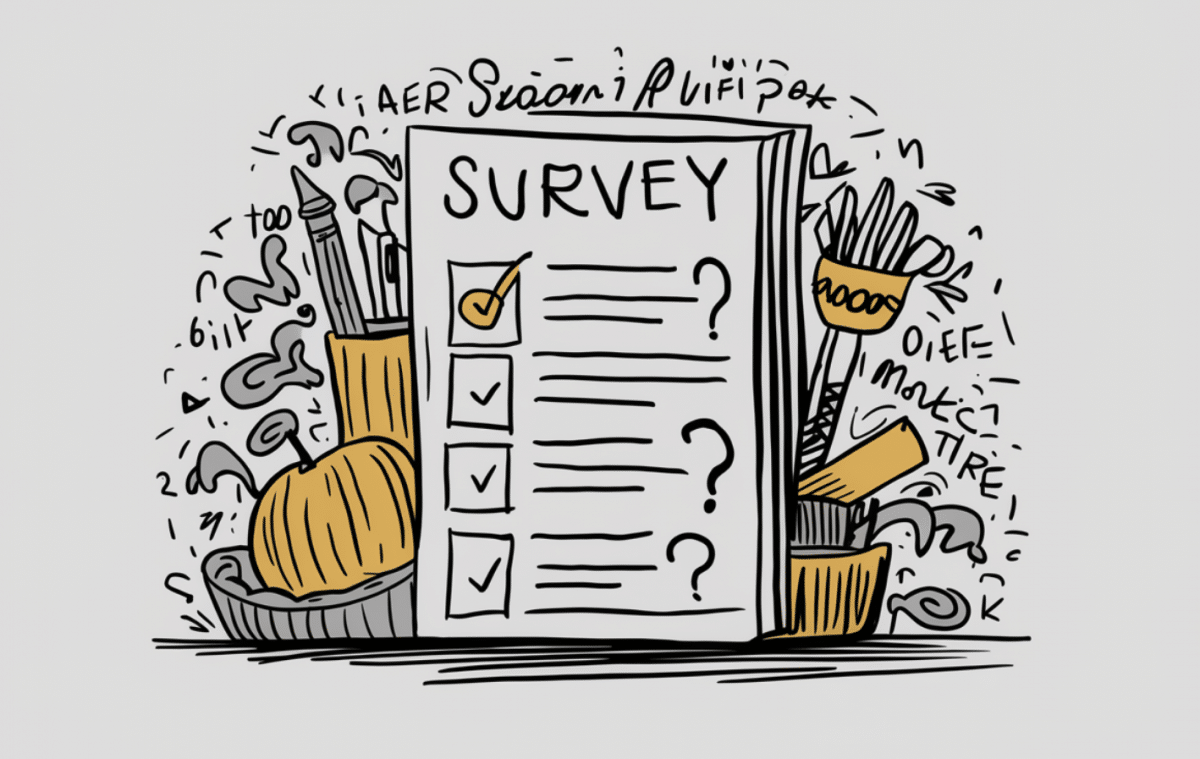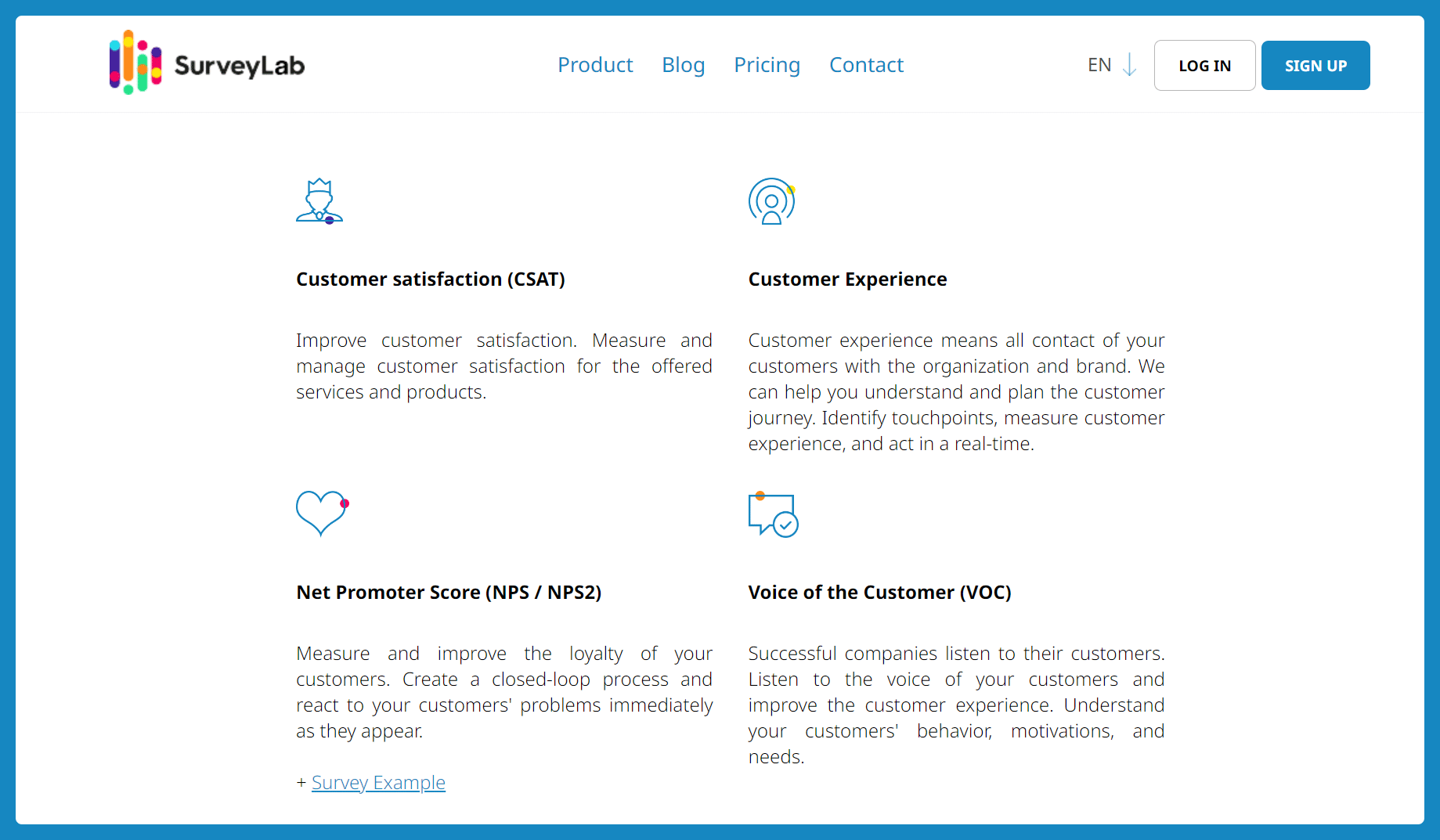Customer feedback surveys are an invaluable resource for gathering insights and making informed business decisions.
However, the integrity of survey results can be compromised by common survey question errors, such as the use of double-barreled questions. Today, we’ll show nine pitfalls that can arise from using double-barreled questions in your surveys – and how to avoid them.
What is a Double Barreled Question
A double-barreled question is a type of survey question that asks respondents to address multiple topics within a single question, making it difficult to discern which part of the question is being answered. Unlike separate questions that aim for a single answer on a specific topic, double-barreled questions often lead to ambiguous or even inaccurate data. They are considered a form of leading question, as they can inadvertently guide survey respondents toward particular answer options.
❌ How do you rate our product and customer service?
❌ Did you find our offer satisfying and affordable?
❌ How is the taste and appearance of this cookie?

Main Pitfalls of Using Double Barreled Questions
Pitfall 1: Inaccurate Data Collection
When a double-barreled question makes its way into your survey, it often leads to inaccurate data. This is because such a question asks the respondent to consider two or more elements in the same sentence. As a result, it becomes challenging to decipher which part of the question the survey respondents are addressing.
This lack of clarity can distort the survey data, making it less reliable for making business decisions. Inaccurate data can also lead to wasted resources as you may end up focusing on the wrong issues.
How to avoid this pitfall?
Use separate questions to address each topic you’re interested in.
Pitfall 2: Reduced Response Rates
Double direct questions can be particularly overwhelming for the person answering the survey. These questions demand more cognitive effort, which can lead to survey fatigue. As a result, you may experience reduced response rates, which in turn affects the quality of your survey results.
This is especially problematic for survey creators aiming for comprehensive and accurate survey results. Lower response rates can also make it difficult to achieve statistical significance.
How to avoid this pitfall?
Keep your survey questions clear and concise to encourage completion.
Pitfall 3: Ambiguous Questions in Interpretation
Ambiguous questions, including double-barreled ones, introduce a layer of complexity in analyzing data. When a question is ambiguous, it’s difficult to ascertain the particular response the respondent intended.
This can lead to misinterpretation of data, which is detrimental when you’re aiming for accurate results to inform your business decisions. Ambiguity can also lead to challenges in comparing your data with industry benchmarks.
How to avoid this pitfall?
Ensure each question is designed to elicit a single, clear answer.
Pitfall 4: Ineffective Decision-Making
The use of double-barreled survey questions can lead to unwise business decisions. This is because the data collected is often muddled and unreliable. For instance, if a respondent answers affirmatively to a double-barreled question, it’s unclear which part of the question elicited the positive answer.
This lack of specificity can mislead survey creators, leading to ineffective or even detrimental business strategies. Poor decisions can have long-term negative impacts on your organization.
How to avoid this pitfall?
Always test your survey questions on a smaller audience before full deployment.
Pitfall 5: Increased Survey Length
Double-barreled questions essentially pack two questions into one, thereby increasing the length of your survey. Longer surveys can lead to respondent fatigue, resulting in less reliable answers. To avoid double-barreled questions, it’s crucial to frame clear and concise questions that seek only one answer. Longer surveys also require more time to analyze, increasing operational costs.
How to avoid this pitfall?
Limit the number of questions in your survey to only those that are essential for your research goals.
Pitfall 6: Difficulty in Benchmarking
When your survey questions are poorly worded or double-barreled, benchmarking against industry standards or previous surveys becomes a challenge. This is because the data collected is not directly comparable, making it difficult to measure performance or identify areas for improvement. Inconsistent data can also make it difficult to track changes over time.
How to avoid this pitfall?
Use standardized survey questions that are commonly accepted in your industry.
Pitfall 7: Lower Data Quality
The presence of leading questions, including double-barreled ones, compromises the quality of your survey data. Respondents may be led towards a particular answer, thereby skewing the results. For survey creators who are carefully examining data for valuable feedback, this can be a significant setback. Biased data can also undermine the credibility of your findings.
📚 Read also: 6 Great Customer Feedback Examples.
How to avoid this pitfall?
Eliminate loaded questions and use neutral language.
Pitfall 8: Ethical Concerns
Utilizing double-barreled or leading questions in your survey raises ethical concerns. Such questions can be seen as a form of biased language that influences the respondent’s answer options. This undermines the integrity of the survey responses and the ethical standing of the survey creator. Ethical lapses can also harm your brand’s reputation.
How to avoid this pitfall?
Always review your survey for ethical considerations before distributing it.
Pitfall 9: Increased Costs
The time and effort required to clean and interpret the data from double-barreled questions can escalate costs. This is particularly concerning for those who aim to achieve accurate results without inflating the budget. Therefore, identifying and avoiding double-barreled questions is crucial for cost-effective survey research. Increased costs can also limit the resources available for other important projects.
How to avoid this pitfall?
Invest in quality survey design software that flags potential issues in your questions.

Does Using Double Barreled Questions Have Any Benefits?
While much has been said about the pitfalls of using double-barreled questions, leading questions, and ambiguous questions in surveys, it’s worth exploring the other side of the coin. Can these often confusing questions, including compound questions and assumptive questions, actually offer any benefits?
Benefit 1: Efficiency in Gathering Multiple Insights
While double-barreled questions are often criticized for their complexity, they can be efficient in certain contexts.
For example, a double direct question may allow you to gather insights on two closely related topics in a single answer.
This can be particularly useful in a work environment where time is of the essence and survey goals are focused on broad themes rather than specific details. However, it’s crucial to frame these questions carefully to avoid confused respondents.
Benefit 2: Eliciting More Nuanced Responses
Sometimes, a compound question can prompt respondents to think more deeply about the issues at hand. While this approach can lead to ambiguous answers, it can also yield more nuanced responses that a single question might not elicit.
For instance, a double-barreled question example like “Do you find your work environment both challenging and rewarding?” could provide a more comprehensive view of employee satisfaction.
But again, it’s essential to identify double-barreled questions and use them judiciously to meet specific survey goals.
📚 Read also: Employee surveys. Tools for the HR teams.
Benefit 3: Uncovering Hidden Assumptions and Biases
Interestingly, the use of double-barreled or even loaded questions can sometimes reveal hidden assumptions or biases among respondents.
For example, an assumptive question that presumes a certain condition can elicit a negative answer that you might not get with a more neutrally phrased question.
This can be valuable in studies aimed at understanding perceptions or societal attitudes. However, it’s worth noting that not everyone will interpret or answer these questions in the same manner, so they should be used sparingly and with clear intent.
More Double Barreled Questions Examples
In this section, we’ll provide a few examples of double-barreled questions commonly found in surveys. These examples will serve as a practical guide to help you identify double-barreled questions in your own surveys. Understanding these examples is crucial for avoiding survey question errors and ensuring that you collect accurate and actionable data.
Example 1: Work Environment
❌ Double-Barreled Question: Do you find your work environment to be both challenging and rewarding?
Separate Questions:
✅ Do you find your work environment to be challenging?
✅ Do you find your work environment to be rewarding?
Example 2: Product Satisfaction
❌ Double-Barreled Question: Are you satisfied with our cold email solution price and quality?
Separate Questions:
✅ Are you satisfied with the product’s price?
✅ Are you satisfied with the product’s quality?
Example 3: Customer Service
❌ Double-Barreled Question: Was the customer service representative friendly and knowledgeable?
Separate Questions:
✅ Was the customer service representative friendly?
✅ Was the customer service representative knowledgeable?
Example 4: Health and Wellness
❌ Double-Barreled Question: Do you believe that diet and exercise are equally important for weight loss?
Separate Questions:
✅ Do you believe that diet is important for weight loss?
✅ Do you believe that exercise is important for weight loss?
Example 5: Company Policies
❌ Double-Barreled Question: Do you agree with the company’s sustainability and diversity policies?
Separate Questions:
✅ Do you agree with the company’s sustainability policies?
✅ Do you agree with the company’s diversity policies?
By examining the above examples, you can see how double-barreled questions can be misleading and why it’s important to break them down into separate questions for clearer, more accurate data from survey respondents.
Double Direct Question vs Double Barreled Question
The terms “double direct question” and “double-barreled question” are often used interchangeably, but they have subtle differences. A double direct question typically asks respondents to answer two closely related questions in the same manner, often within the same sentence.
On the other hand, a double-barreled question combines two or more unrelated or loosely related questions into one, making it difficult to identify which part the respondents answered.
While both can lead to ambiguous answers, double direct questions are generally less confusing than double-barreled questions.
However, both types can be considered a form of leading question or loaded question, as they may guide the respondent toward a particular answer.
PRO TIP: Use SurveyLab
Whatever type of a survey you create, you need to have a reliable tool. And SurveyLab is one of the top picks here.

It supports different types of questions and formats, which helps you get precise answers. You can use logic in your surveys to make them smarter. This means the survey can skip questions that don’t apply to the respondent, making the experience better for them.
You can see the results as they come in. This is great because it lets you react quickly if you need to make changes. SurveyLab ensures your data is safe and secure, which is very important when you handle sensitive information.
You can even customize how your surveys look so they match your brand or the topic you are studying. Make the surveys more appealing to respondents in just a few clicks!
Conclusion
In this guide, we’ve looked at the issues with using double-barreled questions in surveys. These questions can be tricky and often lead to unclear or inaccurate data. We’ve shown you how to identify double-barreled questions and offered simpler alternatives.
While some may argue these questions can give useful answers, the risks usually outweigh the benefits. It’s also important to watch out for other confusing types like ambiguous questions, double negative questions, and double-ended questions. These can mess up your survey results just like questions that use double negatives or assume a certain answer.
In short, the best way to get good survey data is to ask clear and straightforward questions. This helps you avoid common mistakes and get the most useful and accurate information.
But don’t forget about a solid surveying tool! Sign up for SurveyLab.
Go, identify that double barreled question now. Go, remove that ambiguous question too!
FAQ on double-barreled questions
Let’s clear the doubts out!
A double-barreled question is a survey question that asks about two topics at once. It can confuse the person answering because the question is not clear which topic they are responding to. These questions can lead to unclear and inaccurate data.
You can fix a double-barreled question by breaking it into separate questions, each focusing on a single topic. This makes your questions clearer and helps you collect more accurate data. It also makes analyzing your survey results easier.
If you use double-barreled questions, you might collect data that does not accurately reflect the respondents’ opinions. This can lead to poor business decisions based on incorrect information. It can also reduce the response rate as respondents may find the survey confusing and difficult to complete.
